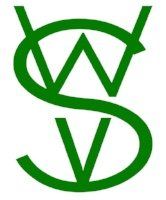11. Squash Courts
Squash Courts 1
In June 1977 the treasurer Ken Pitchers and assistant treasurer Dave Boldy agreed that the time had come to merge the two accounts now that fund raising for actually building the village hall had finished. This led to a heated debate in the village hall committee before it was accepted.
While the village hall was being planned, the hall committee had considered the idea of including squash courts but the idea was not pursued, mainly because of the additional cost involved. Now they began to look again, thinking that it might become a revenue producing activity. There had been a number of requests that the village society do something to improve sporting facilities and at that time there was a big demand for squash, with other courts in the area heavily booked. The hall committee distributed leaflets to explore the amount of support and when satisfied that there would be sufficient interest they went to a special general meeting of the society to get authorisation to take plans to a draft stage. They wanted to move quickly to have chance of using a council Job Creation scheme to help with labour costs. After lengthy discussion the general committee agreed that they could proceed and spend up to £100, but plans must come back to the general committee for further discussion, including questions of grants, fund raising and management.
A general committee meeting on March 1st 1979 was almost completely devoted to the squash court question. Bradford businessman Bob Slicer was invited to listen to the discussion and offer his advice. The two big issues were raising the capital and a realistic assessment of eventual revenue from the project. The squash courts group had approached Bradford Council for a loan of £40,000, which was reduced to £25,000 and subject to a number of conditions. The meeting was long and views by no means unanimous. The treasurer said that at least £3,000 could come from WVS funds, but there were differences of opinion about how much the society should keep in hand for unforeseen future requirements. There were differences too, both within the committee and more generally among the membership, about whether the society should be embarking on another expensive project so soon and whether squash was the right thing. Some wondered whether it might prove a short-lived enthusiasm. Mr. Slicer encouraged them to go ahead, He believed leisure was the best investment and they should view it as a money making opportunity. He would provide some help. The committee voted to proceed, providing the loans that had been talked about were definitely available.
An interest free loan from the Sports Council, with Mr Slicer as guarantor was a great help. Recruitment of members brought in more funds when people agreed to pay their first year’s membership up front, to be paid back if the courts were not built.
WVS continued with a range of fund raising activities including a lottery launched the previous year, with a weekly draw for £100 first prize. To sell plenty of tickets, people were encouraged to become agents. This way they could earn a small commission and if they wished, allocate a further percentage to a society or charity of their choice. It went well to start with, but ticket sales fell off and the scale of operations had to be reduced, making it a ‘closed lottery’ to comply with the law. It made money for the society, but not on the scale they had hoped for.
Although it was a loan and not a grant that was sought from Bradford Council, there was some opposition from councillors. Some said that, while it would be repaid and thus cost the council nothing, it would in the meantime deprive other areas of funds, even though no other project had at that time applied for anything. The contractor’s price for the courts was guaranteed until March 20th. On the 16th Bradford officials delivered a bombshell. The society needed to match the £25,000 and the council would not take into account the amount by which volunteers were to reduce the cost by doing some of the work themselves and delaying part of the construction. An extra £6,000 had to be found over the weekend. Once again it was thanks to Verner Wheelock’s efforts that several members of the society agreed to lend enough to cover the £6,000. Promissory notes were lodged with the society’s auditor and a letter from him delivered to council officials on Monday morning. Later that day the council agreed the loan, but as the society now had an extra £6.000 reserved, limited it to £19,000. This felt decidedly unfair, but it was enough for work to go ahead. The Manpower Services Commission approved finance to meet some of the labour costs and when a bar licence was obtained, a deal was worked out with a brewery.
Even the building was not straightforward. An old drain, incorrectly marked on a plan and discovered after work started, meant the position of the building had to be moved a few feet. Bad weather and some unsatisfactory brickwork delayed completion so that the courts were not ready in September/October as planned. They were officially opened by the Lord Mayor Coun. John Senior in March 1980. Several months without anticipated playing fees affected cash flow, but the club opened with a full membership and a waiting list.
The village hall committee had changed its name to special events committee to avoid confusion with the village hall management committee, and a squash committee was formed to look after the running of the squash club
Copyright © Astrid Hansen.
All Rights Reserved.
